Grown Up in the 1940s – Fashion
17 August 2022
Find out more about how wartime rationing and changing gender roles influenced the fashions of the 1940s
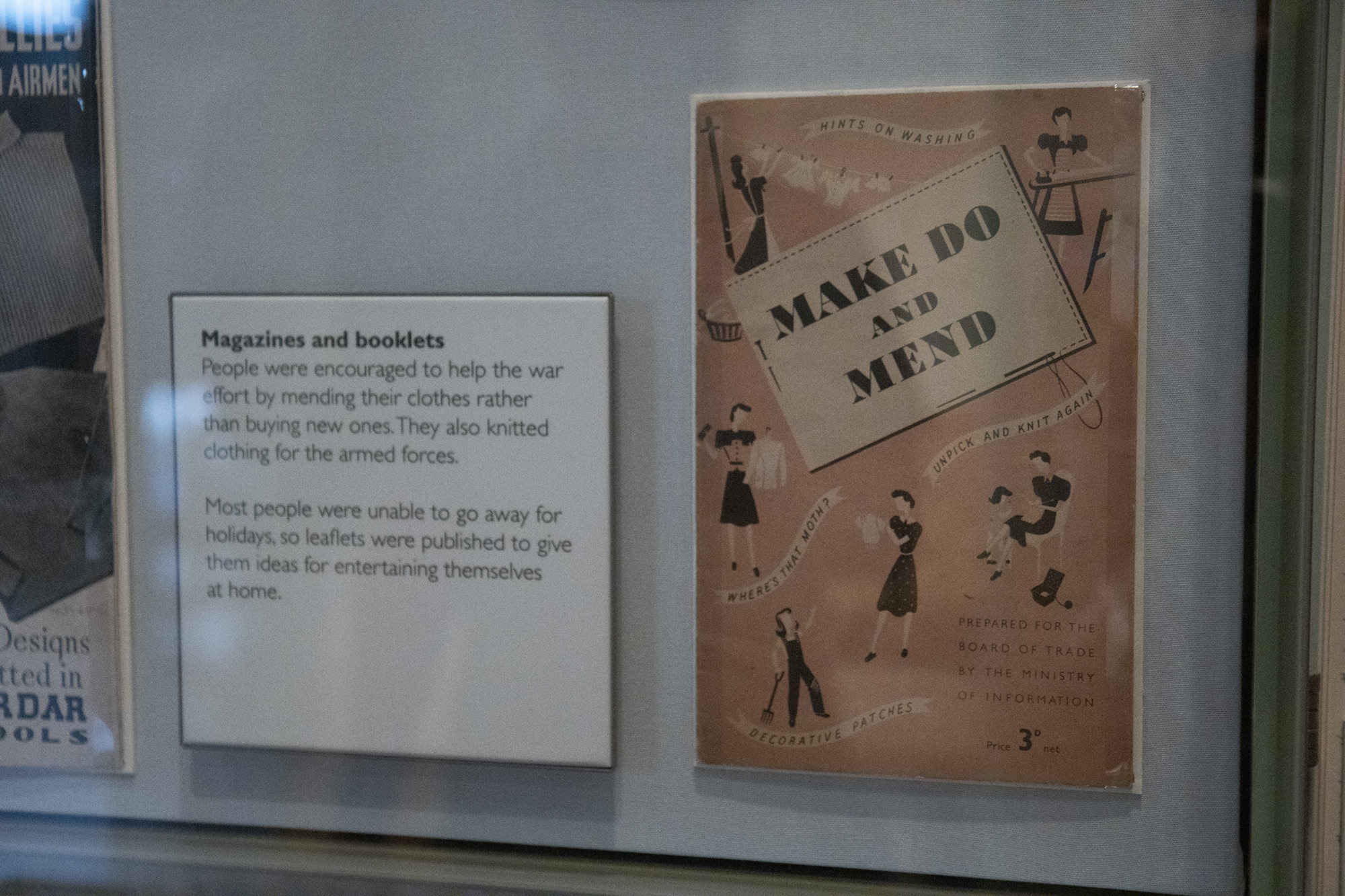
Alongside our Grown Up in Britain exhibition with the Museum of Youth Culture, we've been exploring the fashion, music and entertainment that would have been familiar to young people in the UK across the decades. This week, we're taking a closer look at the fashions of the 1940s and how they were affected by the Second World War.
Like everything else during the 1940s, fashion was heavily impacted by the Second World War, with clothes rationing coming into force in Britain in 1941, and not ending completely until 1949. Moreover, the government began exercising control over the types of clothes that could be made, with the introduction of its Utility clothing scheme in 1942.
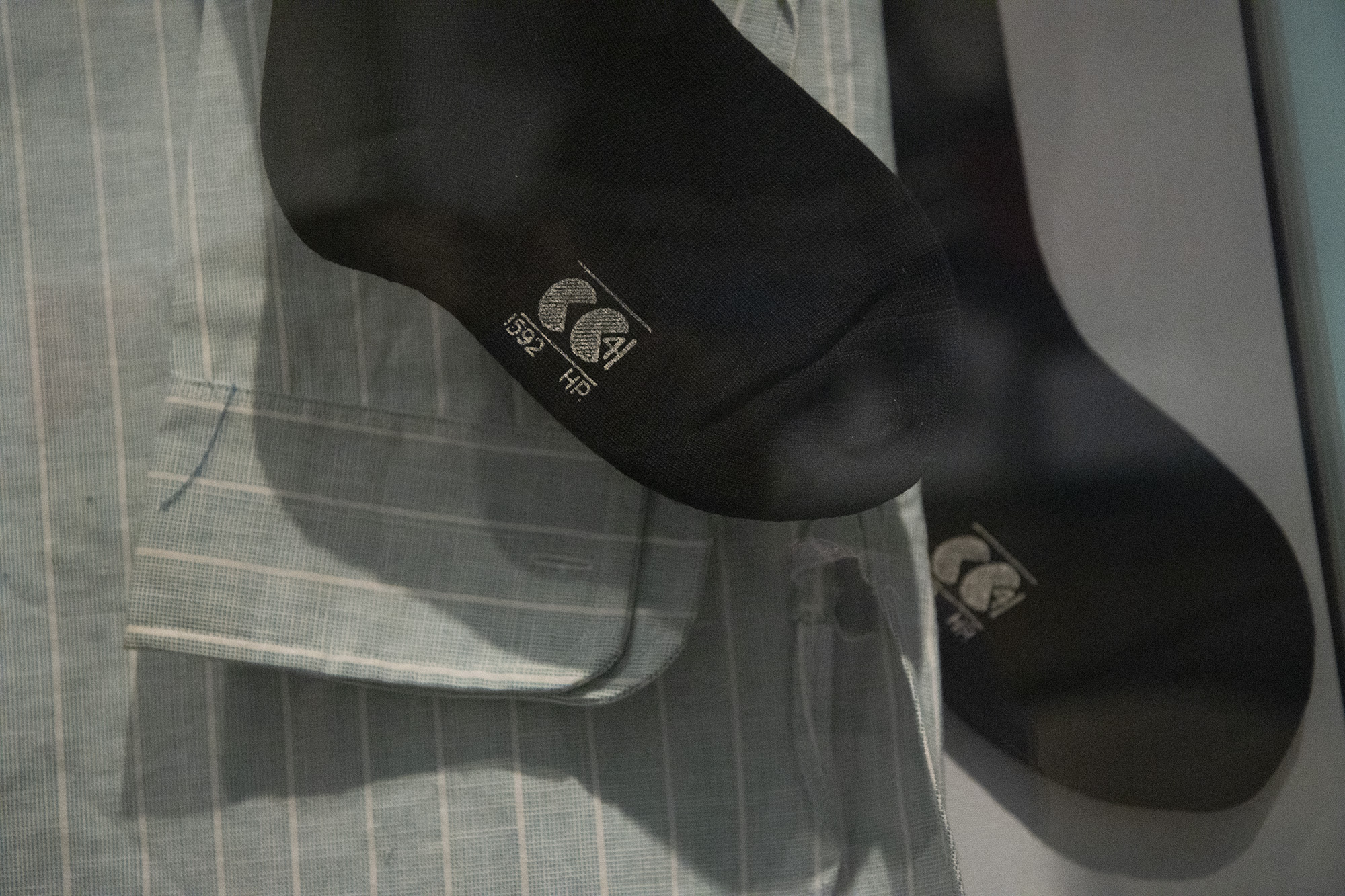
Responding to material shortages and the need to redirect limited supplies towards the war effort, Utility clothing was designed to be functional and durable, imposing limitations on the amount of fabric and other materials that could be used to create clothes. For example: single-breasted jackets replaced double-breasted ones; there were limits on lapel size, turn-ups and number of pockets; long, full skirts were replaced by more streamlined looks; and the use of zips and elastic were heavily restricted.
It wasn’t all bad news though: in fact, there were definite advantages, as Utility clothing guaranteed a degree of quality control, being made from long-lasting fabrics with the aim of limiting the amount of clothing people needed to buy and produce. Keeping up morale was also considered important enough that the Board of Trade employed the services of the newly formed Incorporated Society of London Fashion Designers to develop its Utility range, insisting that it had “no wish to adopt the role of fashion dictator”. Designer Reginald Shipp was responsible for the Civilian Clothing logo that became a familiar sight, as seen on these socks in our History Gallery.
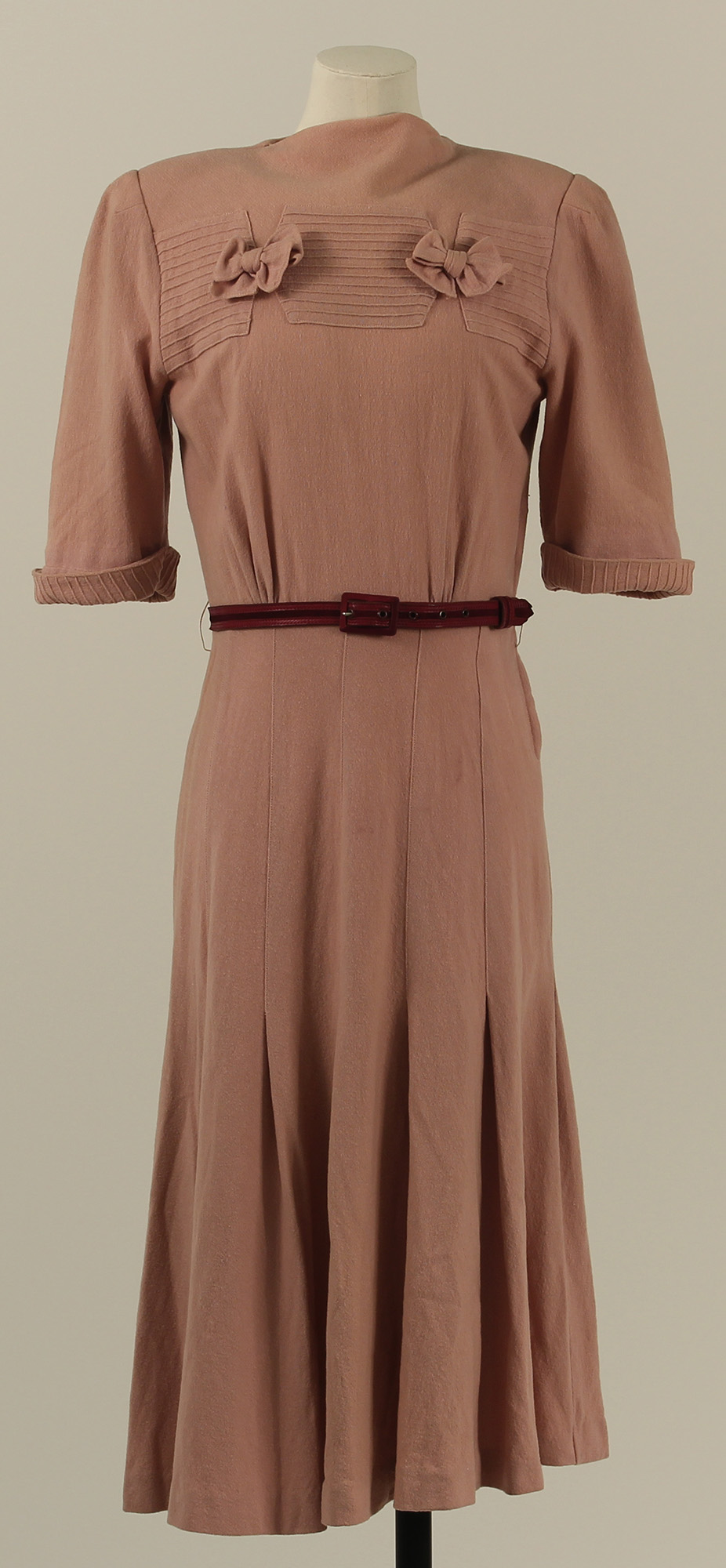
The response was largely favourable, and manufacturers also found stylish ways of responding to new demands. For example, new handbags were created with built-in gas mask compartments, while luminous, glow-in-the-dark accessories such as buttons helped solve the problem of increasing traffic accidents caused by wartime blackouts.
People also found ways to be creative within the restrictions, altering and upcycling existing clothes or other fabrics they had around the house. To get around the ban on turn-ups, some men purchased oversized trousers and had the cuffs turned up at home. Some women repurposed their husbands’ clothing to make new outfits for themselves while the men were away at war, and things like blankets, butter muslin or blackout material (which was unrationed) could be transformed into garments. Women also made jewellery and accessories with materials they could find at home, sometimes following tips and ideas published in newspapers and magazines. Cosmetics could be hard to come by, but workarounds were found like substituting beetroot juice for lipstick.
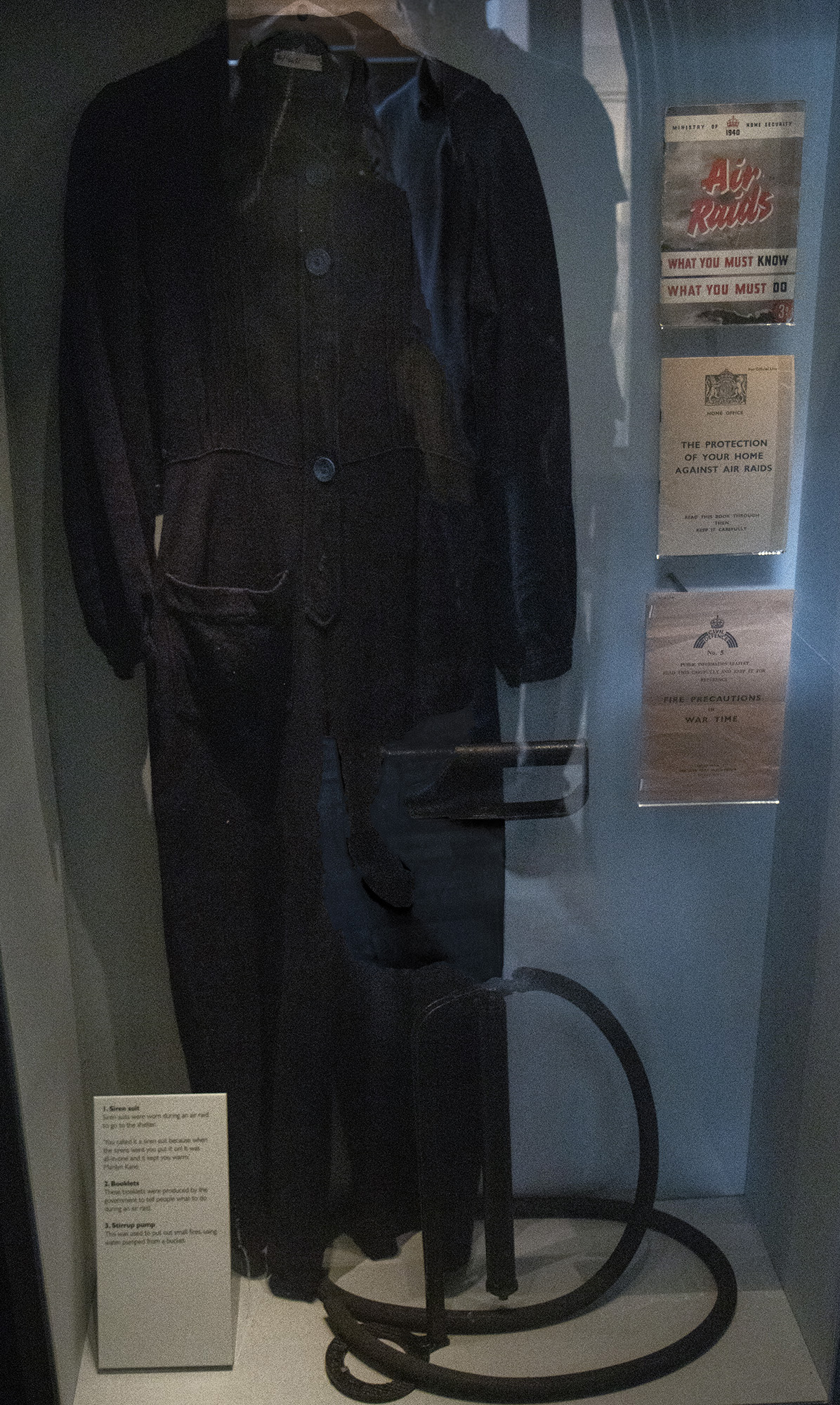
Reusing and stretching out the lifespan of clothes was widely and actively encouraged, with pamphlets, posters and advertisements calling on people to “Make Do and Mend”. Darning thread was unrationed, to help people fix their existing clothes, and publications were printed with guides to caring for clothing and avoiding damage from moths and other pests.
With many men away at war and those at home tending to continue wearing suits they already had, menswear went through a less marked change in style than women’s fashion, which developed in response to the new requirements of factory work. Skirt suits and short-sleeved, button up dresses ending just below the knee were the most common, but women’s trousers also slowly grew in popularity – typically with high, fitted waists and wide legs.
Victory rolls and pompadours kept hair out of the face and away from machinery, while scarves and hair nets helped protect it while shampoo was in short supply. You might also have been in possession of a “siren suit” – a kind of 1940s onesie which could be quickly thrown on over nightclothes if you needed to escape to bomb shelter outside the home late at night. You can see one on display in the replica Anderson shelter in our History Gallery.
Rationing would continue for another four years after the war ended, but appetites for more luxurious clothing grew rapidly, particularly after Christian Dior unveiled his glamorous “New Look”, characterised by long, full skirts and waist-cinching jackets. Meanwhile, the “American Look” was beginning to offer a more sporty, casual alternative for men and women alike.
See some more 1940s clothes from our collection below.
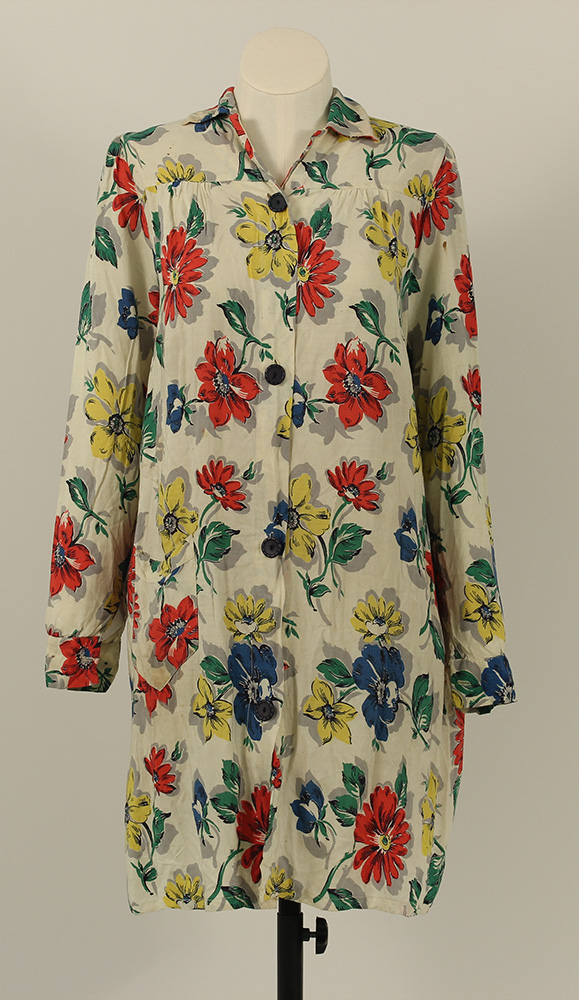
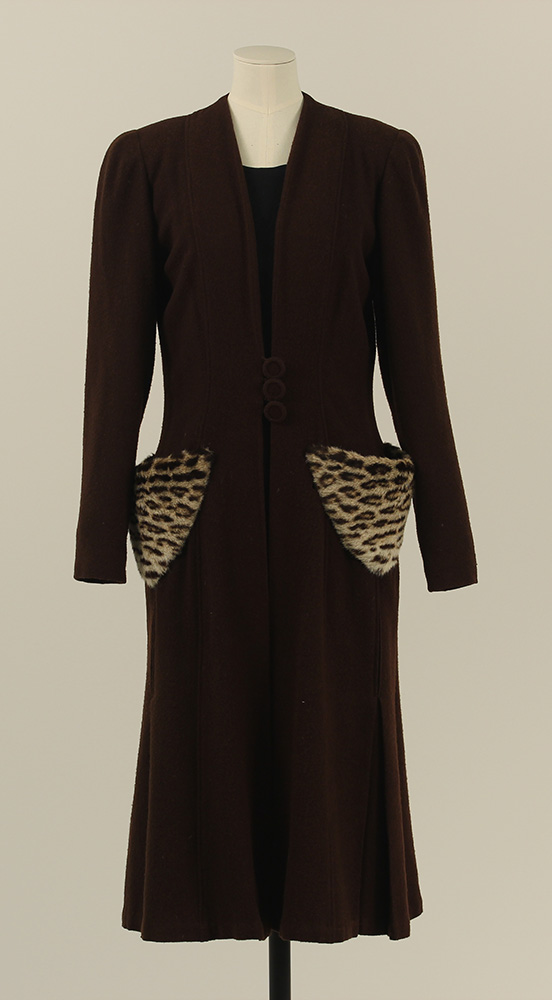
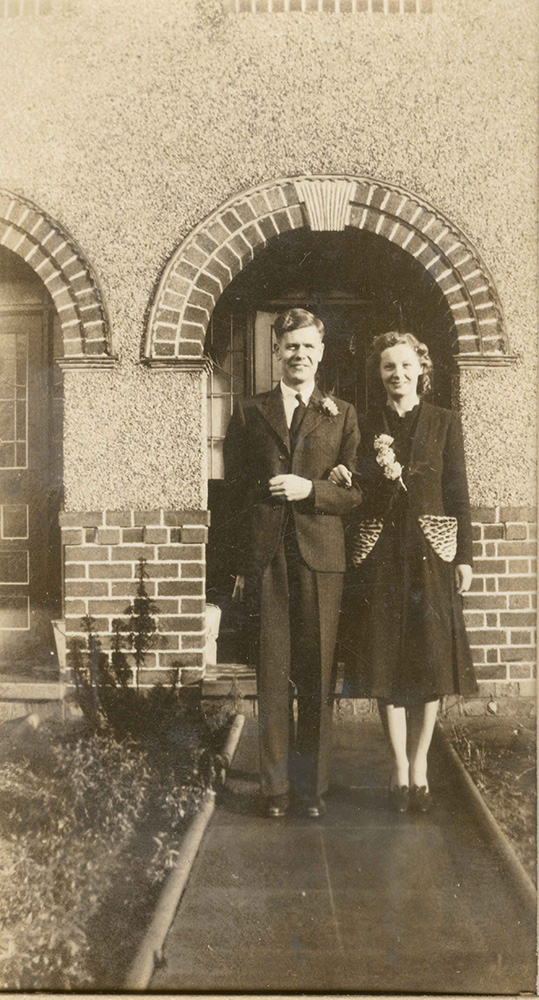
A women's Utility housecoat or overall. A coat with ocelot fur pockets worn by Nora when she married Harry Paul in December 1940
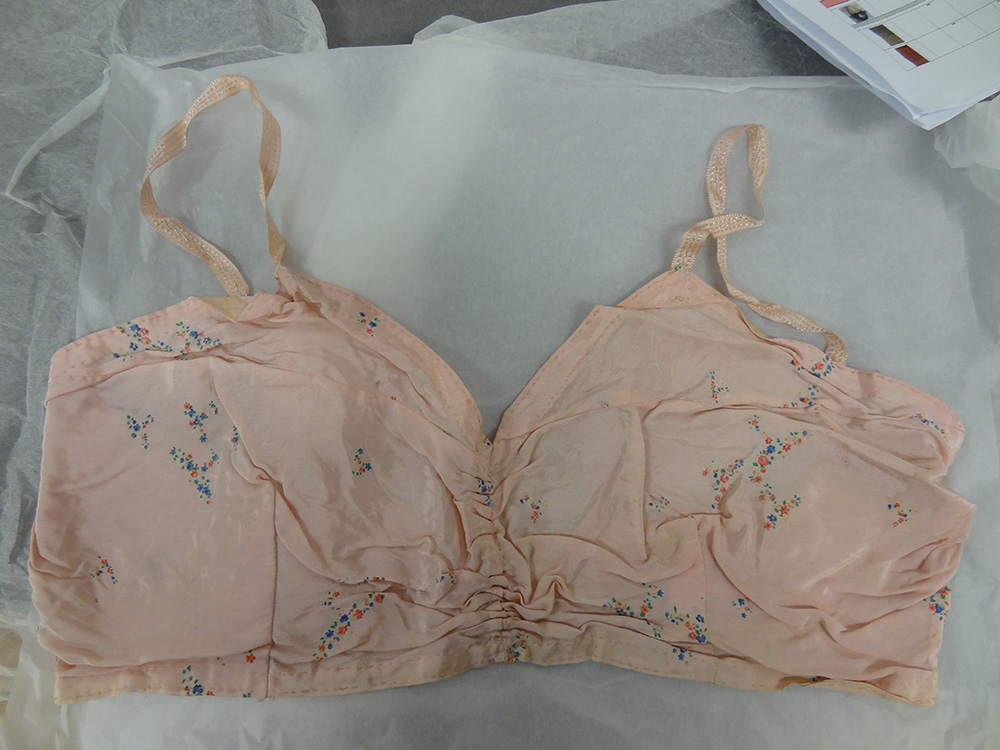
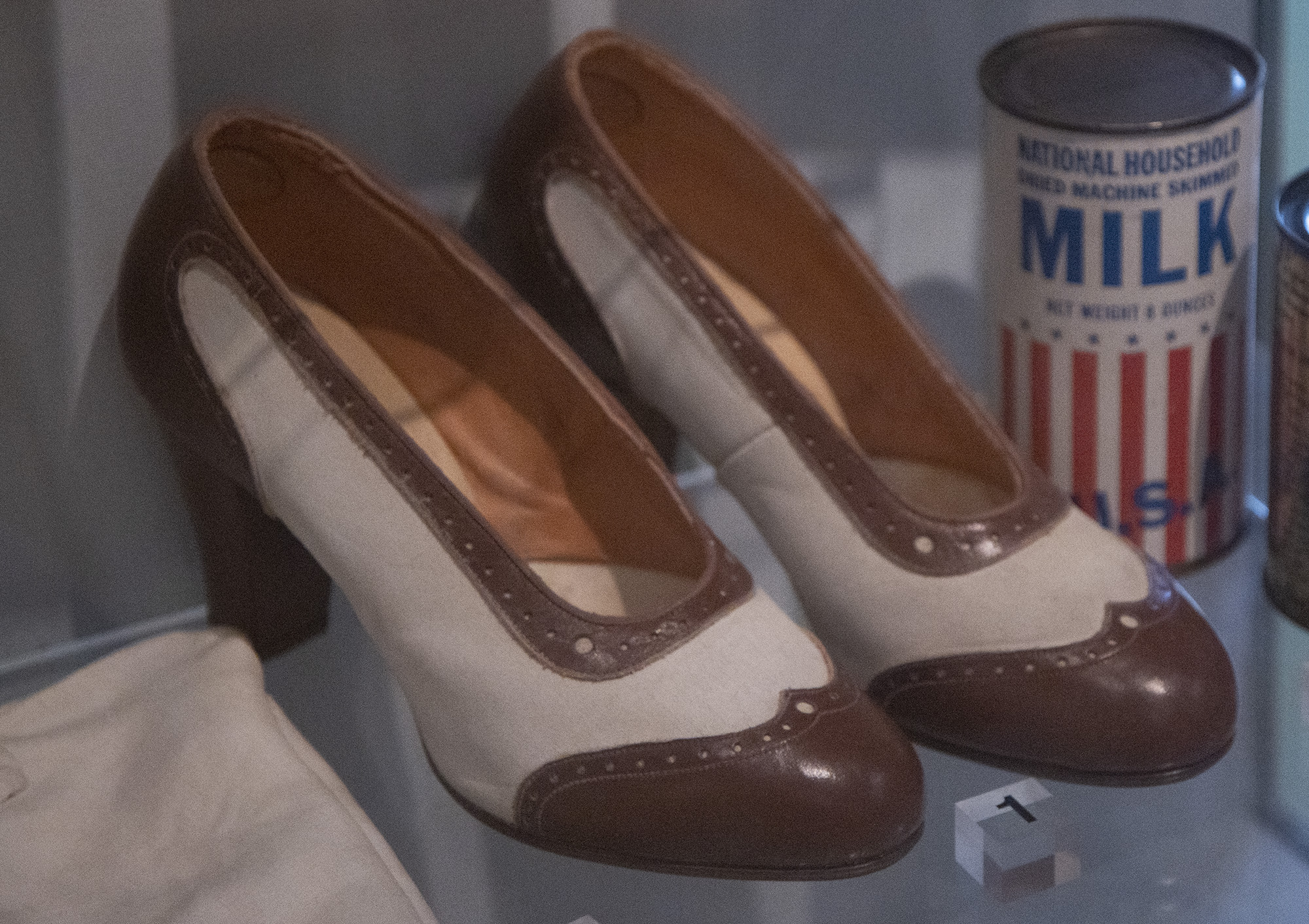
A pale pink, crepe de chine bra with floral decoration. A pair of women's shoes
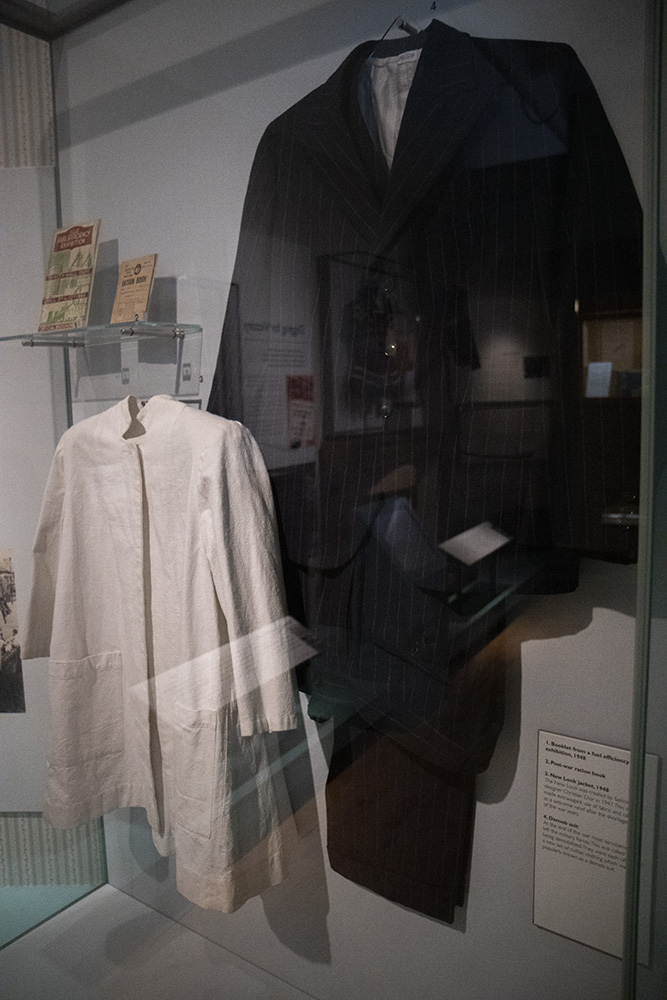
A white 1948 "New Look" jacket by Christian Dior and a men's pinstriped "demob" suit, given to a returning soldier.
Want to hear some of the sounds of the 1940s? Have a listen to our Spotify playlist below!